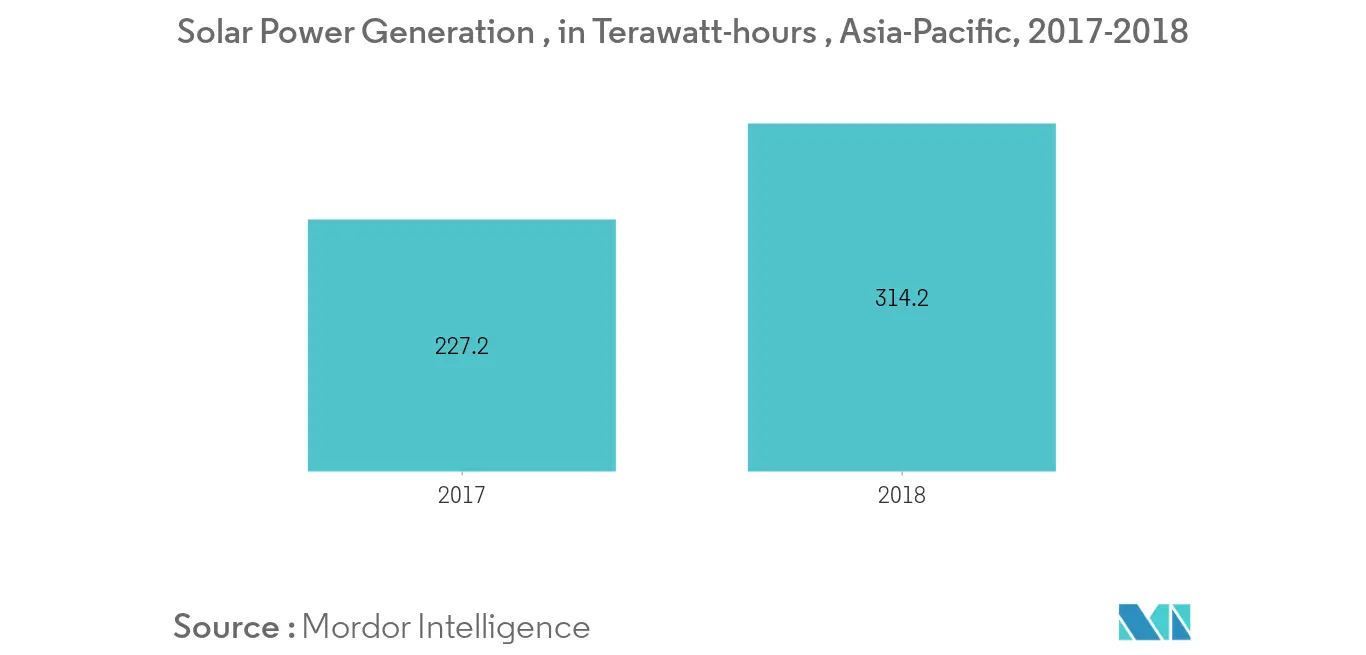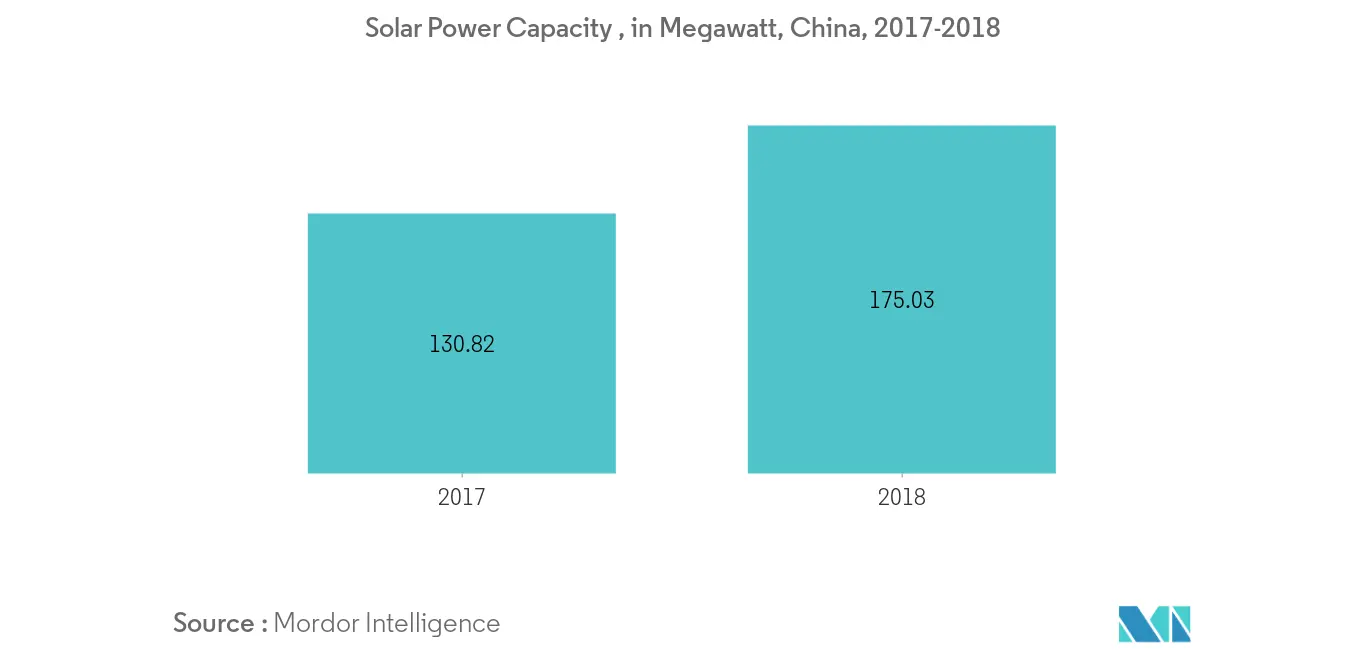Market Trends of Asia-Pacific Distributed Power Generation Industry
This section covers the major market trends shaping the APAC Distributed Power Generation Market according to our research experts:
Solar PV Based Distributed Power Generation to Witness Significant Growth
- Solar PV has dominated the market in the past and is expected to do so in the forecast period too. The sector is the most popular form of distributed power generation due to factors like relatively low installation cost, drop in prices of solar panel manufacturing, and government subsidies.
- Increasing demand for clean energy is one of the primary drivers for the distributed solar power generation market in the region. Distributed solar PV capacity in the region is expected to increase by over 47 GW by 2024, while commercial and industrial solar PV capacity is expected to increase by over 166.2 GW by 2024.
- Rooftop solar offers the benefits of modern electricity services to households that had no access to electricity, reducing electricity costs on islands and in other remote locations that are dependent on oil-fired generation, as well as enabling residents and small businesses to generate their own electricity.
- Commercial and industrial systems remain the largest growth segment because they are usually more inexpensive and have a relatively stable load profile during the day that can enable larger savings on electricity bills, depending on the policy scheme in place.
- Therefore, the aforementioned factors are expected to drive the market in forecast period.

China to Dominate the Market
- China has dominated the distributed power generation market in 2018 in the region and is expected to continue its dominance in the coming years as well. The country holds vast potential for the expansion of distributed energy systems (DES), notably in the form of off-grid and residential solar. Inefficiencies in the power grid infrastructure, power supply shortages, and the scalability of decentralized technology pave way for the deployment in the country.
- As of 2018, distributed solar PV accounts for over 27% of China's total solar PV installed capacity. In 2017 China generated around 13.7 TWh of electricity, which is estimated to be enough to meet all energy requirements of all residential consumers of Beijing for 7.5 months.
- The distributed solar power capacity of China reached 53.41 GW after the first quarter of 2019, in which around 2.8 GW was added.
- In 2017, the National Energy Administration and National Development and Reform Commission of China introduced an initiative which provided an opportunity to expand distributed energy resources in the country. The Chinese government continues to draft and implement legislation supporting distributed energy resources (DERs) integration and competition within the segment.
- Distributed wind energy is also on the rise in the country, with a number of projects being awarded to companies like Vestas. The distributed wind power in the country is expected to see an average of 1.5 GW in annual addition in installed capacity until 2027.


